In the vast tapestry of avian evolution, few adaptations are as mesmerizing as the ability to hover in mid-air. While many birds must maintain forward motion to stay aloft, a select few have developed the remarkable ability to suspend themselves in place, much like a helicopter. This extraordinary skill allows these aerial specialists to access food sources and habitats unavailable to other birds, creating unique ecological niches. The hummingbird family stands as the primary example of this evolutionary marvel, though other species have developed similar, if less refined, hovering capabilities. Through specialized anatomy, incredible metabolic adaptations, and precise neural control, these birds demonstrate one of nature’s most impressive feats of flight engineering.
The Hummingbird: Nature’s Premier Helicopter
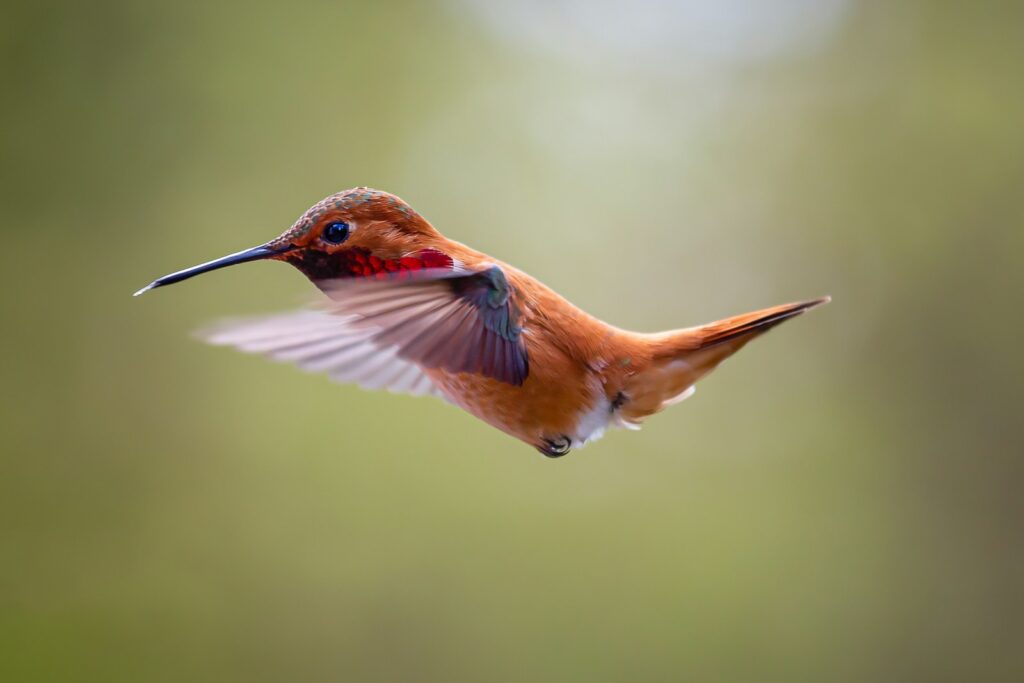
Among all hovering birds, hummingbirds reign supreme as nature’s most accomplished aerial stationaries. These diminutive marvels, belonging to the family Trochilidae, have evolved specialized flight mechanics that no other birds can fully replicate. Their wings rotate in a figure-eight pattern, generating lift on both forward and backward strokes—a unique capability in the avian world. This specialized wing movement allows hummingbirds to hover with unparalleled precision for extended periods, whether feeding from flowers, defending territory, or performing elaborate courtship displays. The ruby-throated hummingbird, for instance, can maintain perfect stability while extracting nectar from flowers, even in gusting winds that would force other birds to land.
Evolutionary Path to Helicopter Flight
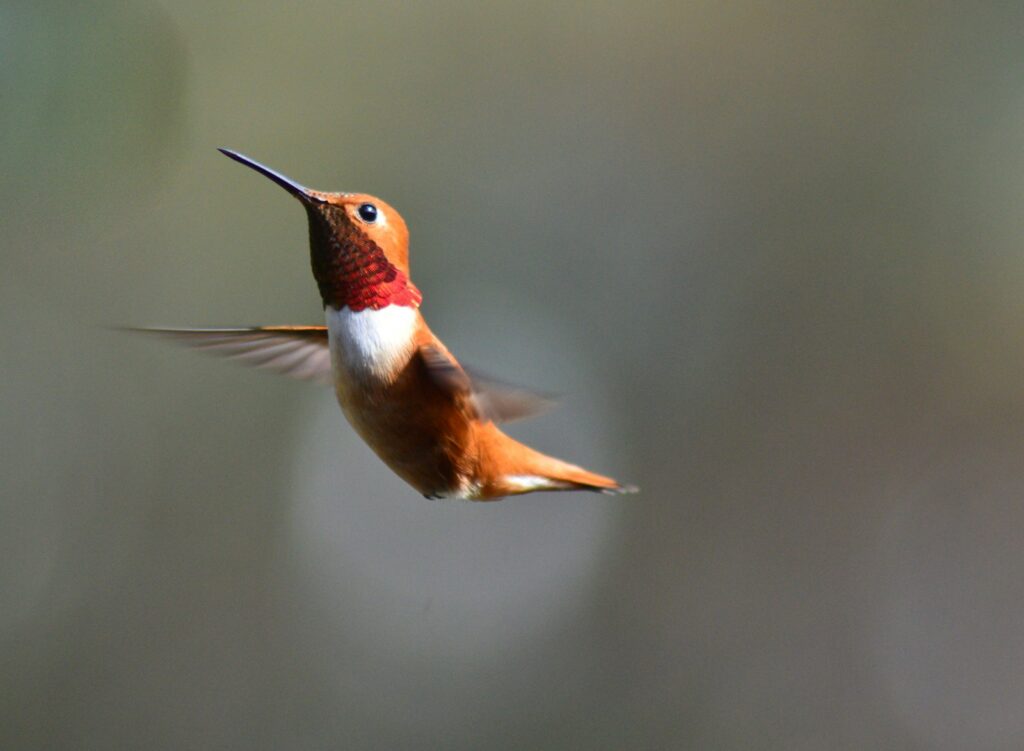
The evolution of hovering flight represents one of the most remarkable adaptations in avian development, having emerged over millions of years. Scientists believe this specialized capability evolved primarily as an adaptation to feed from flowering plants, creating a co-evolutionary relationship between these birds and their nectar sources. Fossil evidence suggests that hovering capabilities began developing at least 22 million years ago, with early hummingbird ancestors already showing adaptations for nectar feeding. As flowering plants diversified and spread, selection pressure favored birds that could more efficiently extract nectar without landing, gradually refining the hovering mechanism. This evolutionary journey required simultaneous changes in wing structure, muscle composition, metabolism, and neurological control—a testament to the power of natural selection to produce specialized adaptations.
The Biomechanics of Hovering
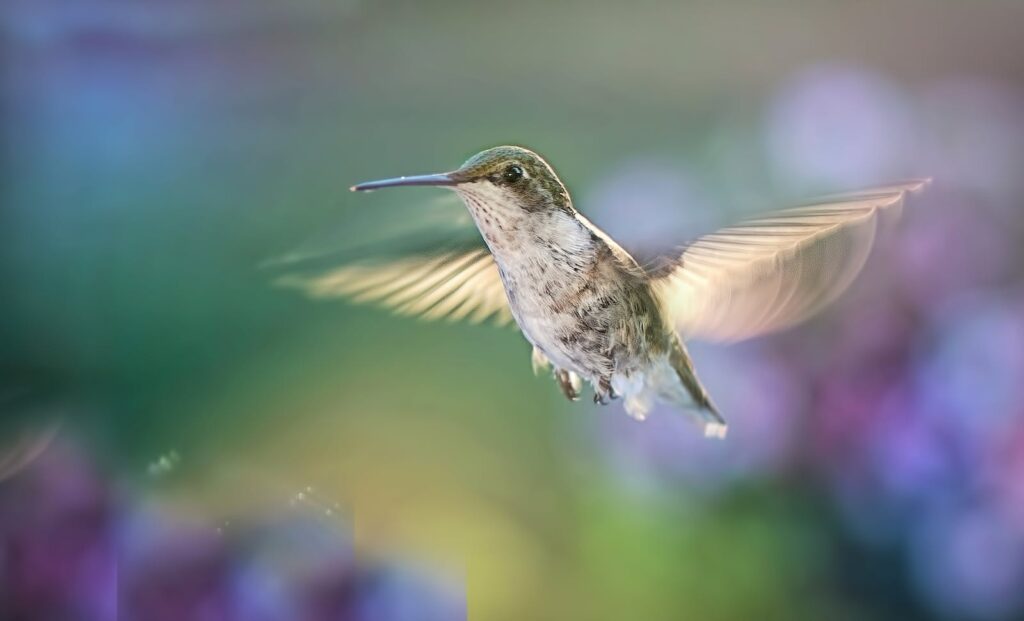
The physics of hovering flight differs substantially from conventional bird flight, requiring specialized biomechanical solutions. While most birds generate lift primarily during the downstroke of their wings, hovering birds must produce lift continuously to counteract gravity without forward momentum. Hummingbirds achieve this through supination—rotating their wings approximately 180 degrees during the upstroke, effectively turning the wing upside down to generate upward force during both strokes. High-speed photography reveals that their wings trace a horizontal figure-eight pattern, with the wingtip moving faster than the wing base to maximize lift generation. Additionally, their wings beat at an astonishing rate of 50-80 times per second, creating the characteristic humming sound that gives these birds their name while providing the continuous force needed to maintain stationary flight.
Anatomical Specializations for Hovering
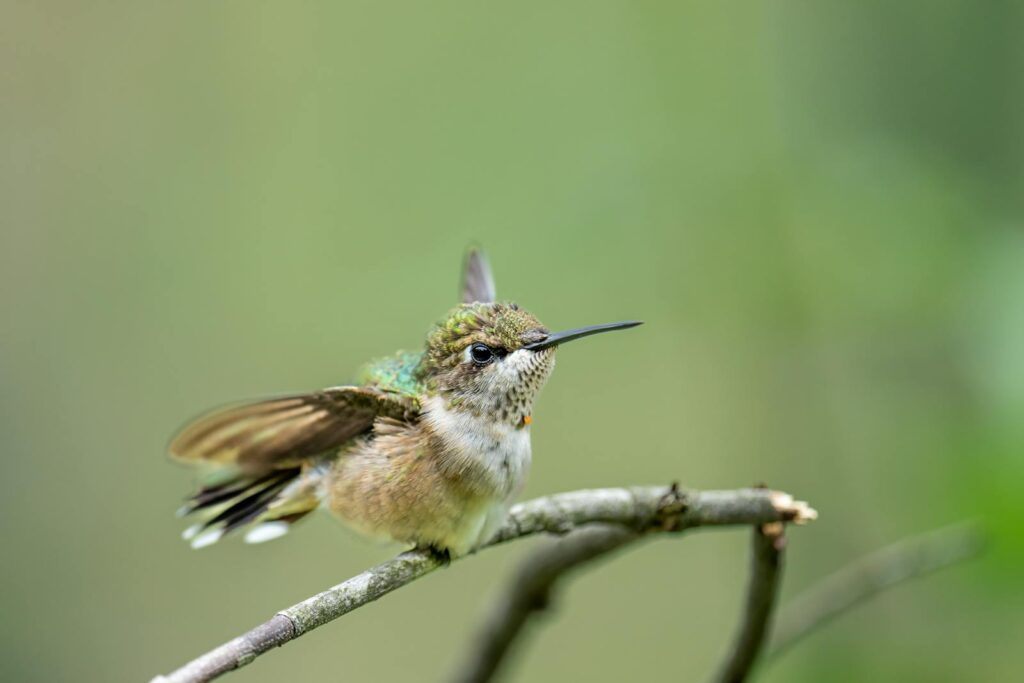
Hovering birds possess remarkable anatomical adaptations that make their aerial feats possible. Their wing structure features proportionally smaller wing area but larger flight muscles than other birds of comparable size, accounting for up to 30% of their body weight. The humerus (upper arm bone) in hummingbirds is uniquely shortened and strengthened, while the hand bones are elongated, creating a wing that pivots more like a helicopter rotor than a conventional bird wing. Their flight feathers are also specially adapted with reduced barbules that decrease air resistance during the incredible wing-beat frequencies they maintain. Perhaps most critically, hovering birds possess specialized shoulder joints with a greater range of motion than other birds, allowing for the unique rotational movements required for sustained hovering.
Metabolic Demands of Helicopter Flight
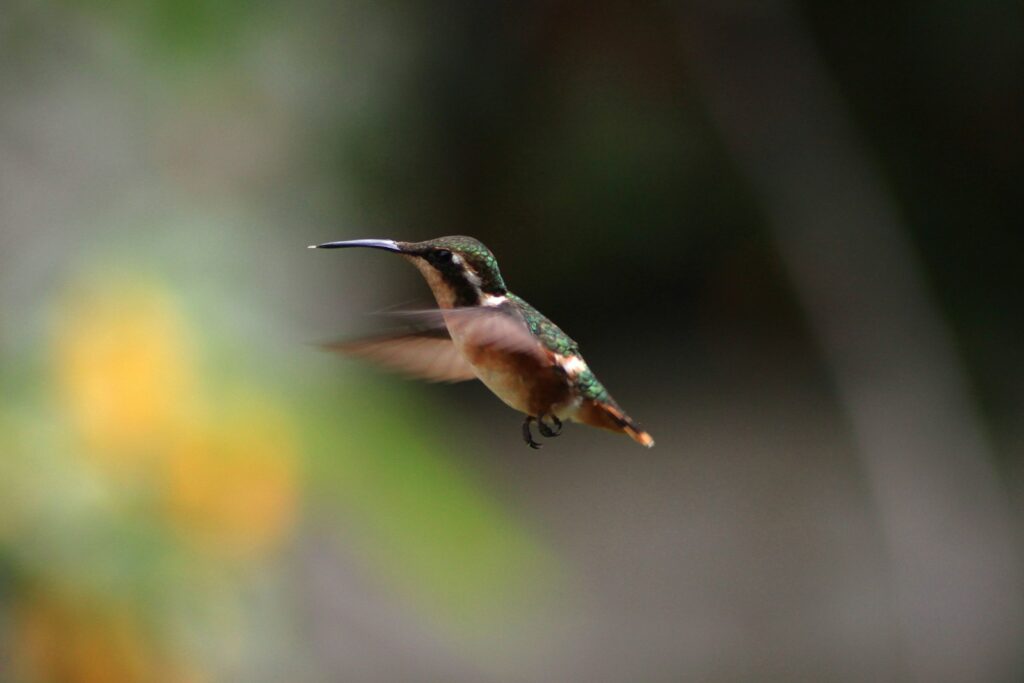
The energetic cost of hovering represents one of the most metabolically demanding activities in the animal kingdom. To maintain this aerial feat, hummingbirds have evolved extraordinary metabolic capabilities, consuming nectar equivalent to more than half their body weight daily and metabolizing sugar at rates that would cause diabetes in mammals. Their tiny hearts beat up to 1,260 times per minute during hovering—the fastest heart rate of any vertebrate—to supply their flight muscles with oxygen-rich blood. This extreme energy requirement explains why hovering birds spend significant time perching between flights and why many hummingbird species enter torpor at night, a hibernation-like state where they reduce their metabolic rate by up to 95%. Their respiratory system has also adapted with enlarged lungs and air sacs that provide the exceptional oxygen delivery needed for sustained hovering performance.
The Kingfisher’s Hovering Technique
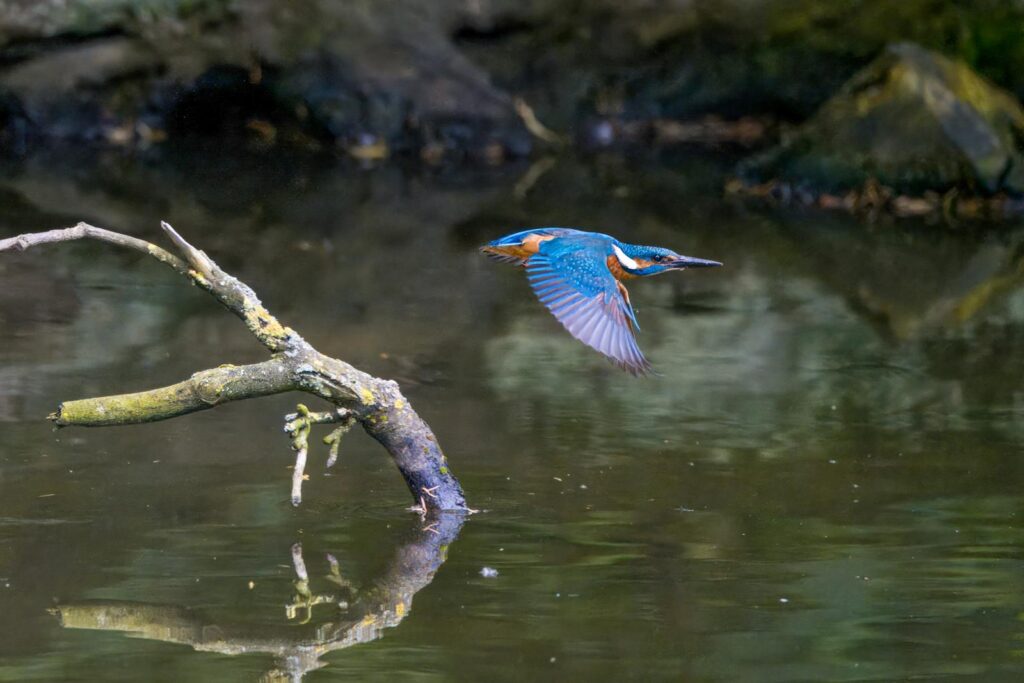
While hummingbirds are the undisputed masters of hovering, kingfishers demonstrate a fascinating variation on this aerial skill. Species like the pied kingfisher and belted kingfisher employ a distinctive hovering technique often called “wind-hovering” that allows them to remain stationary above water while searching for fish prey. Unlike hummingbirds, kingfishers cannot generate lift on their upstroke, so they compensate by rapidly beating their wings while orienting their bodies at a slight upward angle, often facing into the wind for additional lift. Their hovering is characterized by more vertical movement than hummingbirds, requiring constant adjustment and appearing somewhat less stable. This specialized hunting behavior showcases how different evolutionary pressures can produce variations on the hovering theme, with kingfishers developing their technique specifically for hunting aquatic prey rather than accessing nectar.
Kestrels: The Hovering Raptors
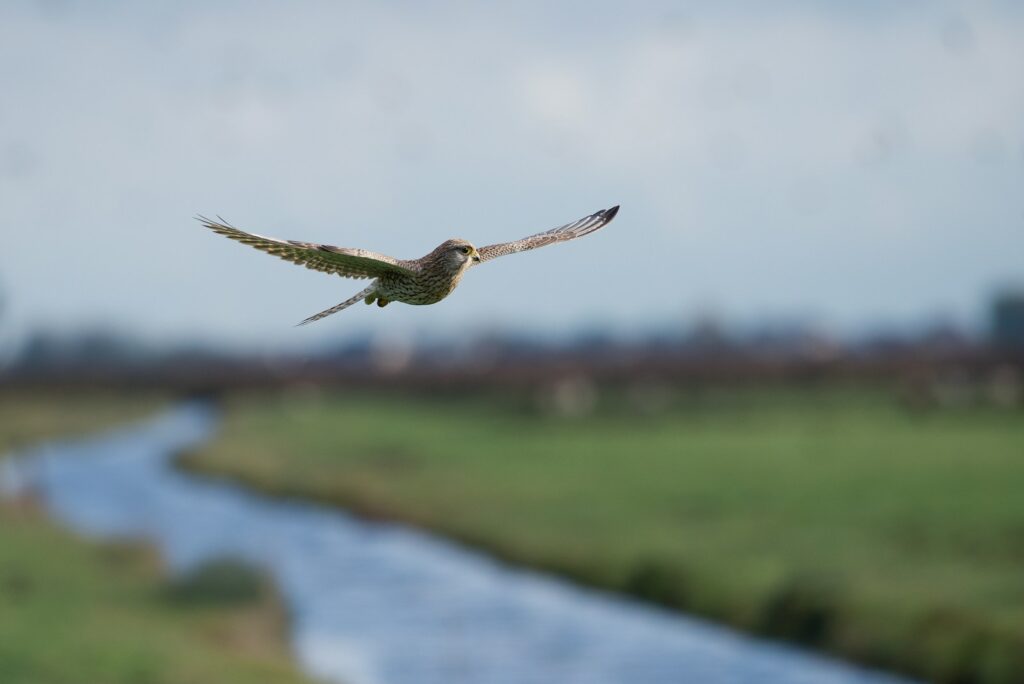
Among birds of prey, kestrels stand out for their remarkable hovering abilities, earning them nicknames like “windhover” in many cultures. The American kestrel and Eurasian kestrel have perfected a technique called “kiting,” maintaining a stationary position by facing into oncoming wind and adjusting their wing and tail positions to create perfect equilibrium between wind force and gravity. This specialized hunting strategy allows these small falcons to scan the ground below for rodents and insects with incredible precision. Unlike hummingbirds, kestrels cannot hover in still air for extended periods, making their technique more dependent on environmental conditions. Their hovering typically occurs at heights of 10-20 meters above open grasslands and roadsides, creating the iconic image of a motionless raptor suspended in mid-air that has captured human imagination for centuries.
Terns and Ospreys: Hovering Fishermen

Several fish-eating birds have evolved hovering techniques specifically adapted for aquatic hunting environments. Terns, particularly Arctic and common terns, can maintain brief hovering positions above water before executing precise diving strikes at fish they spot below the surface. Ospreys demonstrate even more impressive hovering abilities among larger birds, suspending themselves momentarily before plunging feet-first to capture fish. Their hovering technique involves rapid wingbeats combined with spread tail feathers that create additional lift and stability. Unlike hummingbirds’ smooth hovering, these fishing specialists exhibit more visible effort, with pronounced body adjustments and typically shorter hovering durations ranging from a few seconds to nearly a minute in ideal wind conditions. These adaptations highlight how hovering has evolved independently in multiple bird lineages as a solution to the challenge of hunting mobile prey from an aerial vantage point.
Neural Control and Precision
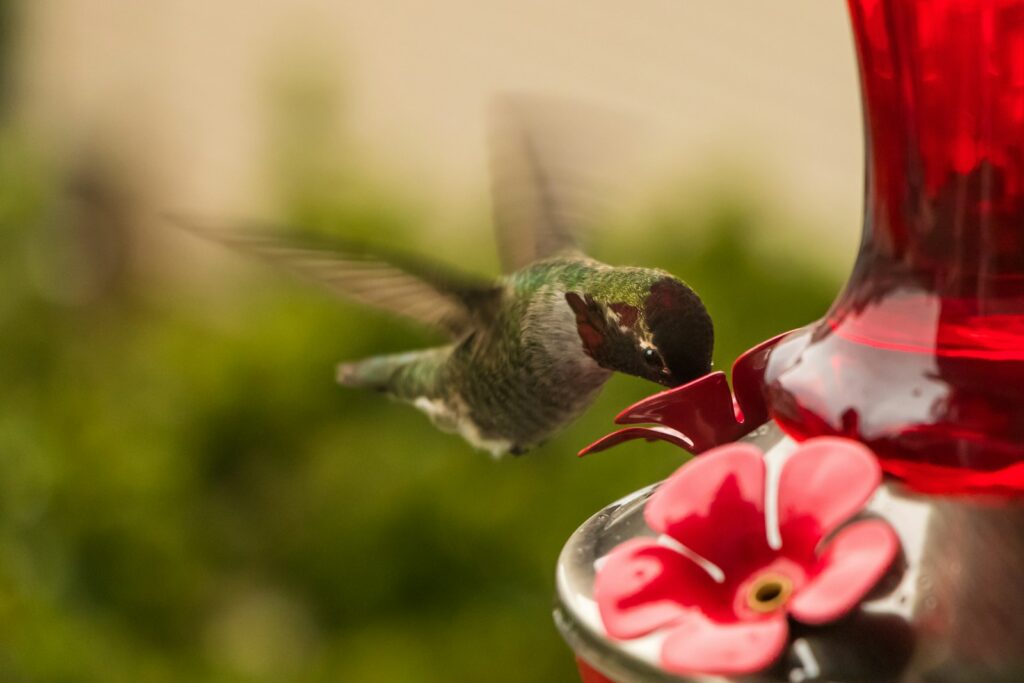
The neurological systems controlling hovering flight represent some of the most sophisticated sensorimotor integration in the animal kingdom. Hovering birds possess highly developed vestibular systems that provide continuous feedback about body position, allowing for instantaneous corrections to maintain stability. Their visual systems are equally remarkable, with specialized neural pathways that process visual information at exceptionally high speeds to match their rapid wing movements. Research has shown that hummingbirds have enhanced visual motion processing in their brains, allowing them to perceive movement up to five times faster than non-hovering birds. This neural specialization extends to the cerebellum, which coordinates the precise muscle contractions required for hovering at rates far exceeding most vertebrate capabilities. Even more impressively, these birds can adjust their hovering position to compensate for moving targets, such as flowers swaying in the wind, demonstrating computational abilities that robotics engineers still struggle to replicate.
Geographic Distribution of Hovering Species
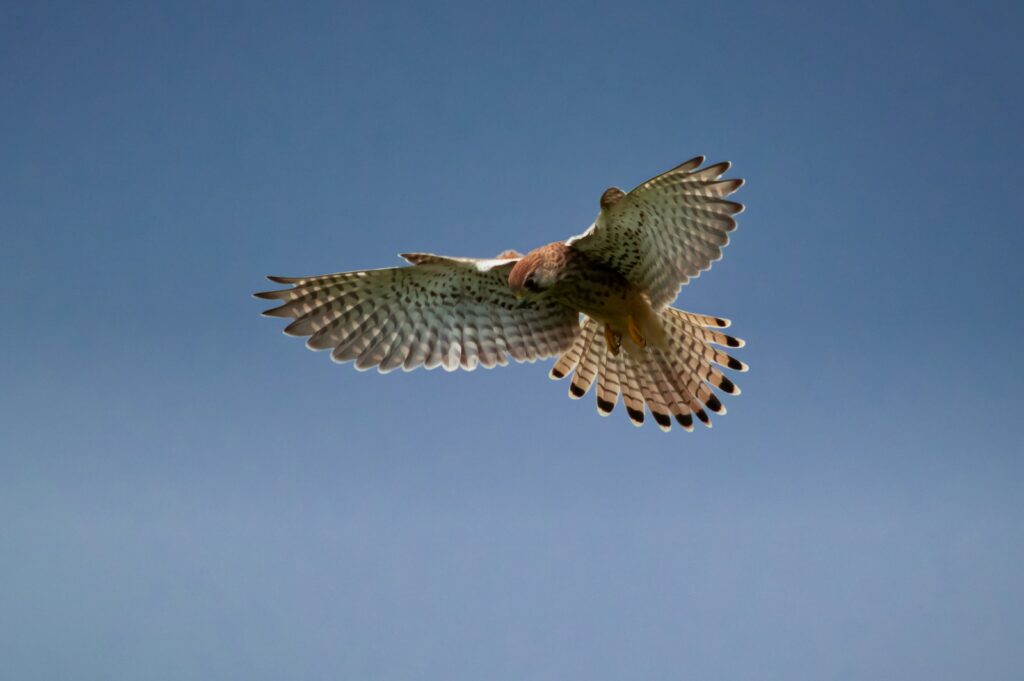
Hovering birds show fascinating patterns of geographic distribution that reflect both evolutionary history and ecological opportunity. Hummingbirds, the most specialized hoverers, are exclusively found in the Americas, with the greatest diversity in the neotropical regions, where over 330 species have evolved to fill numerous ecological niches. In contrast, sunbirds of Africa and Asia have developed limited hovering abilities to access nectar but cannot match hummingbirds’ sustained, stationary flight. Hovering kingfishers and kestrels show a broader global distribution, being present on most continents except Antarctica. Interestingly, Australia has relatively few true hovering specialists despite its rich avian diversity, with its honeyeaters having evolved different strategies for nectar feeding that don’t rely on sustained hovering. This geographic pattern suggests that once hovering evolved in certain lineages, it created opportunities for adaptive radiation within those groups rather than emerging repeatedly across different bird families worldwide.
Human Imitations: Helicopters and Drones

The remarkable hovering abilities of birds have long inspired human engineering efforts, most notably in the development of helicopters and modern drones. Early helicopter pioneers like Igor Sikorsky explicitly studied hummingbird flight mechanics when designing rotor systems that could provide both lift and directional control. Modern micro air vehicles (MAVs) draw even more directly from avian hovering specialists, with engineers creating ornithopters that mimic the wing movements of hummingbirds for surveillance and search operations. However, despite technological advances, human-made hovering machines still fall short of the efficiency of their biological counterparts. While a hummingbird can hover with energy equivalent to a small light bulb, comparable-sized drones require significantly more power and generate more noise. This efficiency gap continues to drive biomimetic research, with recent innovations in flexible wing materials and control algorithms bringing artificial hovering systems incrementally closer to the remarkable capabilities that evolution has perfected over millions of years.
Conservation Challenges for Hovering Specialists
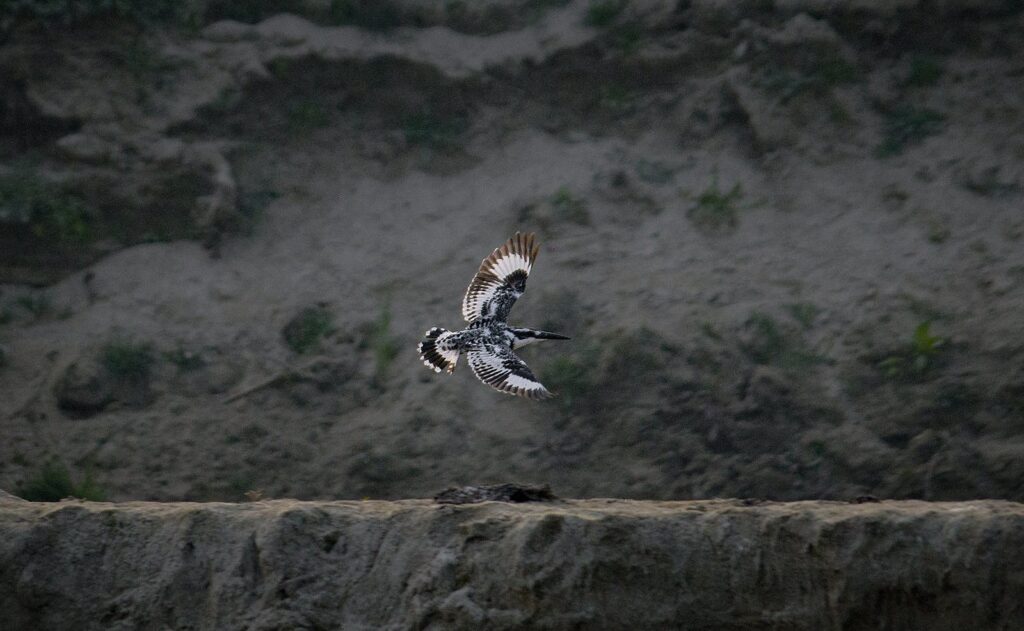
The highly specialized adaptations that make hovering birds so remarkable also create unique conservation vulnerabilities in a changing world. Hummingbirds, with their specific nectar requirements and high metabolic demands, face threats from habitat fragmentation that disrupts the flowering plant communities they depend upon. Climate change poses additional challenges by potentially creating mismatches between migration timing and flower availability for species like the ruby-throated hummingbird. Hovering hunters like kestrels and kingfishers face different pressures, with agricultural intensification reducing prey availability and pesticide accumulation affecting their reproduction. Urban environments present a mixed picture, with some hovering species adapting well to garden feeders and ornamental plantings, while others struggle with light pollution and collision risks. Conservation efforts for these aerial specialists increasingly focus on maintaining connectivity between habitat patches and ensuring year-round resource availability across migratory routes for these high-energy birds whose remarkable hovering abilities come with equally remarkable ecological requirements.
The Future of Hovering Research

Scientific understanding of avian hovering continues to advance through emerging technologies and interdisciplinary approaches. High-speed cameras capable of capturing over 10,000 frames per second now reveal wing deformations and airflow patterns invisible to earlier researchers, while miniaturized accelerometers and GPS units allow tracking of hovering behavior in wild birds. Comparative genomics is beginning to identify the genetic basis for hovering adaptations, with several candidate genes identified that influence muscle fiber composition and metabolism in hummingbirds. Looking forward, researchers are particularly interested in how hovering specialists might adapt to climate change, with preliminary evidence suggesting some hummingbird species are already shifting their ranges to track changing flower distributions. Robotics engineers continue to view hovering birds as inspiration, with each new biological insight potentially translating to improvements in drone technology. As scientific tools continue to advance, our understanding of these remarkable birds will deepen, potentially revealing even more sophisticated aspects of nature’s helicopter-like fliers.
The avian world’s helicopter specialists represent one of nature’s most extraordinary achievements in biomechanical engineering. From the perfectly stable hovering of a hummingbird extracting nectar from a flower to the wind-balanced suspension of a kestrel hunting over grasslands, these birds demonstrate the remarkable diversity of evolutionary solutions to the challenge of stationary flight. Their specialized anatomical structures, incredible metabolic capacities, and refined neural control systems together create one of the most energy-intensive yet precisely controlled movements in the animal kingdom. As we continue to study these aerial masters, they not only enhance our understanding of evolutionary adaptation but also inspire technological innovations that attempt to replicate their remarkable abilities. In a world of constant motion, these birds have mastered the art of perfect stillness in mid-air—a testament to the extraordinary potential of natural selection to produce seemingly impossible biological feats.
